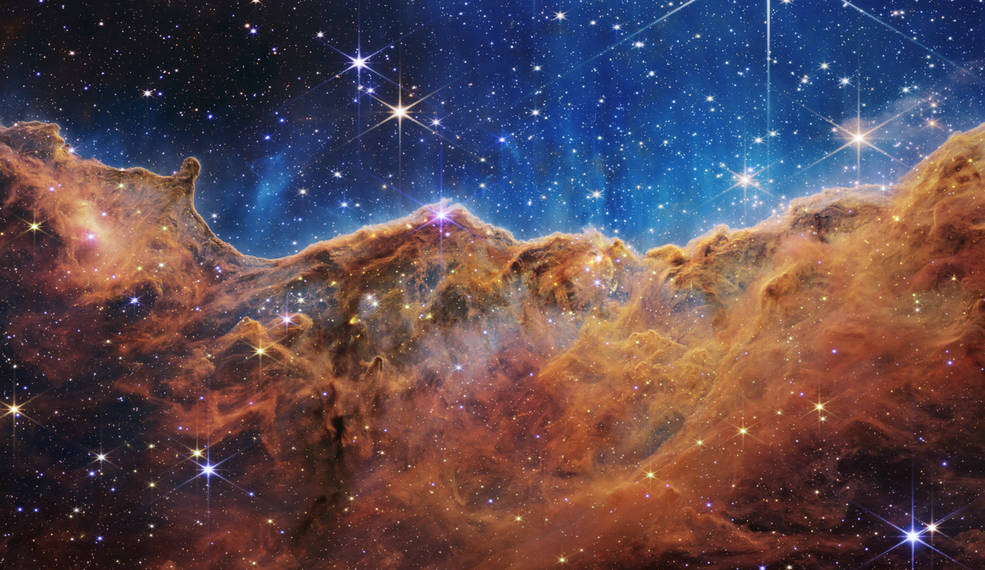There are times in our lives when waiting certainly yields fruits of success through the seeds deeply rooted back in time. The James Webb Space Telescope, a modern marvel of human endeavor and engineering, has revealed its first full-color images and spectroscopic data, thereby heralding the dawn of a new era in astronomy, cosmology, astrophysics, and astrobiology.
Let us analyze the images and data released by NASA, in collaboration with ESA, CSA, and the Space Telescope Science Institute.
Read our introductory article on James Webb by clicking here.
1. Southern Ring Nebula
The southern ring Nebula or NGC 3132 lies 2000 light years away from Earth. It is a type of planetary nebula that forms after the death of its parent star.
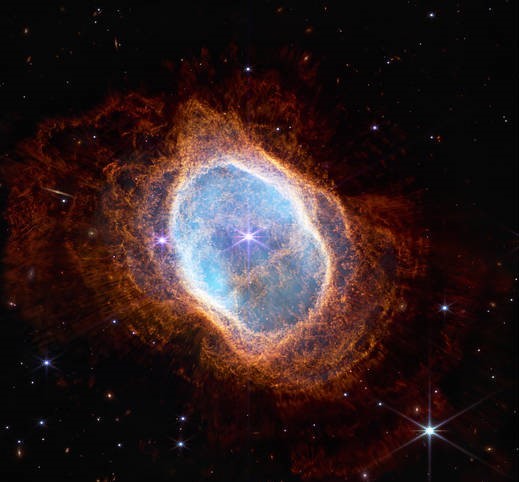
The NIRCam (Near Infrared Camera) image above shows different shells of gas and dust thrown off of the dying star.
The term planetary nebula is a misnomer as it has nothing to do with planets. When a star dies, it shreds off its layers and appears as a spherical structure closely resembling a planet. This is how the term stuck with the early astronomers and it is continuing to date.
The outermost shells in the image are that of the white dwarf and were released the earliest while the innermost ones were released most recently as a part of the end of its life cycle.
Zooming into the image’s right bottom part shows the structure of the nebula in the backdrop of dust and provides information about the history of the star when it was a red giant and its eventual becoming of a white dwarf.

The blue regions in the image depict the shorter infrared wavelength of light which is hotter while the red regions depict the longer wavelengths which are relatively cooler.
Unnoticeable while looking at the whole image at once, if we zoom into the left side of the main image, we can see two distinct galaxies in the background (marked by arrows) that has somehow managed to send their light across the cosmic dust and gas. The galaxy on the top is visible to us edge-on while there is another one below in the right, with an appearance of an elliptical galaxy.

The MIRI (Mid-Infrared Instrument) image below shows something most spectacular and astonishing. In this image when you zoom in the center, you can see two different stars. The dimmer one is a white dwarf that has shredded its outermost layers. The brighter one is still at an earlier stage in its life cycle; it is happily living its life and converting hydrogen into helium and has not run out of fuel yet.
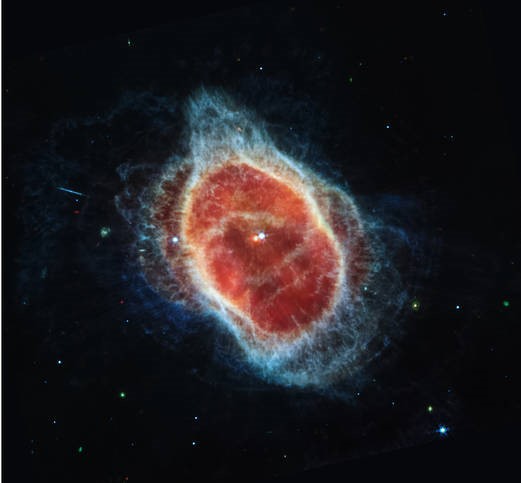
The blue regions are essentially the hydrocarbons that are being fused into the nebula material. Over time, the shells of gas and dust will continue expanding and dissipate into the Milky Way.
Through this activity, they can feed other stellar nebulae like the one that formed our solar system, the Sun, the planets, and us.
This is also how heavier elements from a supernova can move from one star system to the other, forming different complex compounds, that can eventually lead to life formation.
2. Stephen’s Quintet
Stephen’s Quintet is located 300 million light years away from Earth.
In the image shown below, 4 galaxies can be seen in a very tight local group and the one on the left is a foreground galaxy, 40 million light years away from us. In the center of the image, two galaxies are in the process of merging, and with time, all of them will merge eventually.
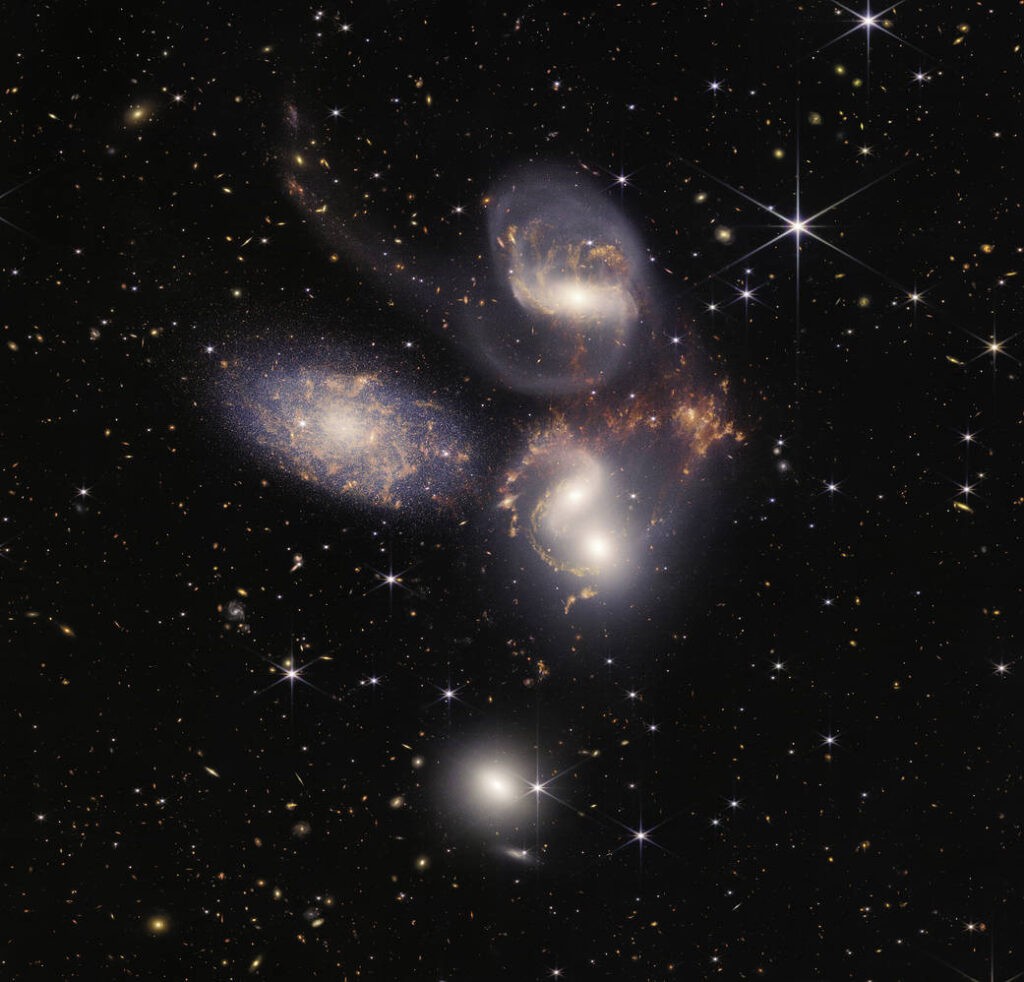
Credits: NASA, ESA, CSA, and STScI
In the MIRI image shown below, dazzling light can be seen in the uppermost galaxy. The brightness is actually due to a very supermassive black hole, about 24 million times the mass of our Sun, and is emitting energy that is equivalent to more than 40 billion suns.
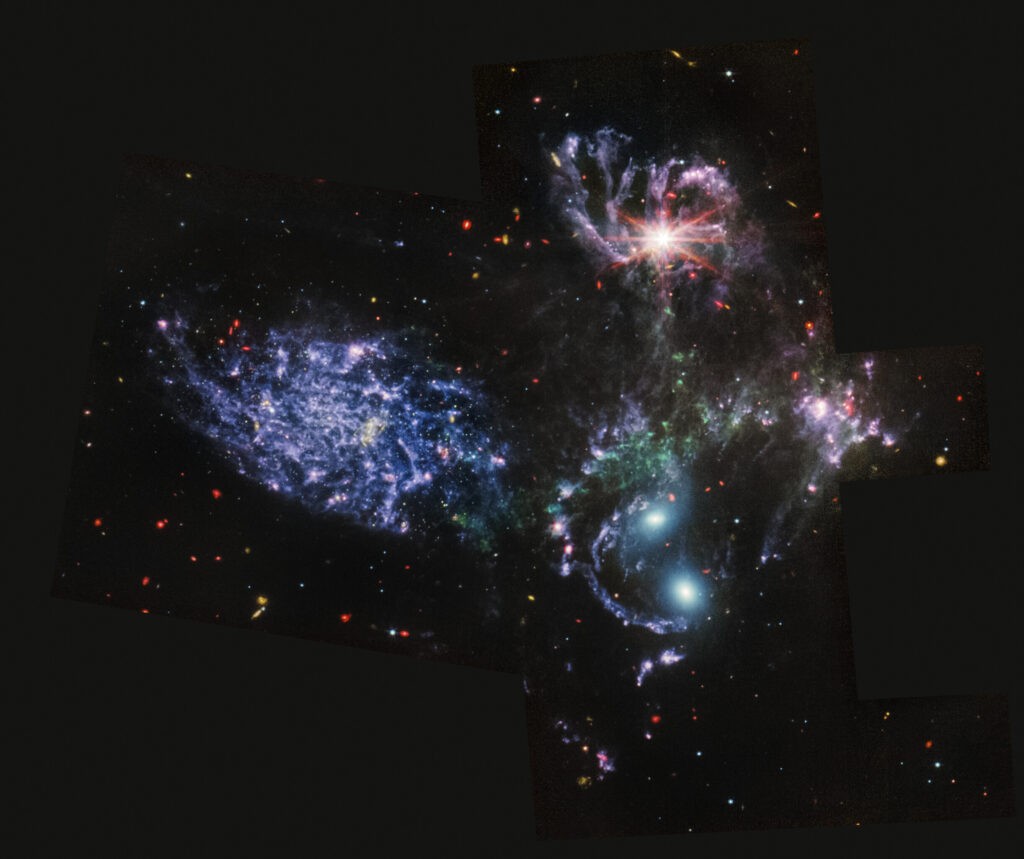
Credits: NASA, ESA, CSA, and STScI
The red color in the above image denotes dusty, star-forming regions along with the far and early galaxies enveloped in thick dust. Blue point sources depict stars or star clusters devoid of dust.
The presence of large hydrocarbon molecules can be attributed to the diffused regions of blue. Green and yellow colors represent more distant, primordial galaxies that are abundant in these hydrocarbons as well.
Due to the interaction of nearby galaxies and clouds of dust and gas, the supermassive black hole has got activated and has started to accumulate all the nearby material resulting in an enormous amount of energy.
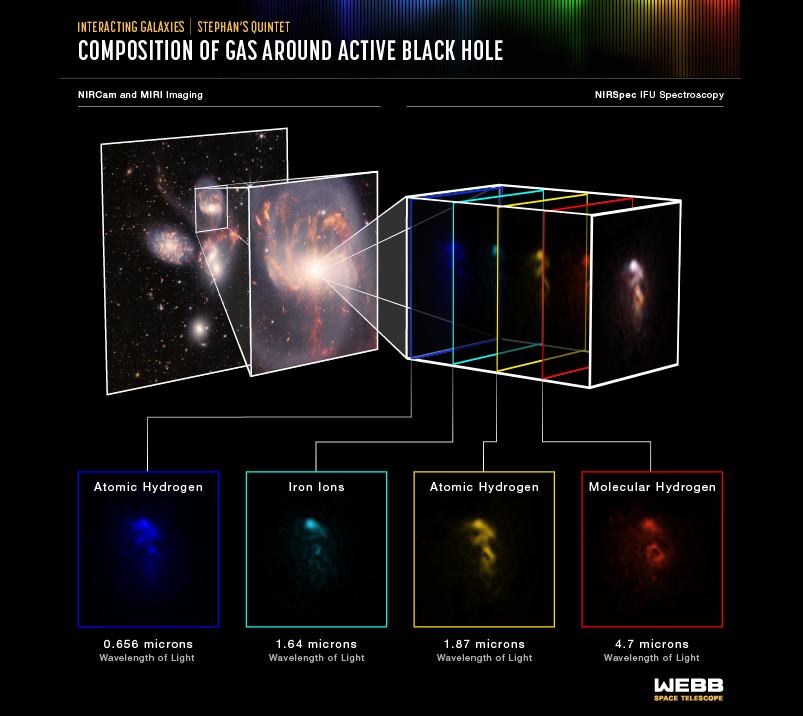
The galaxy on the left side of the image, when zoomed in, also shows a bit of pattern, a type of structure in the dust, and can tell us where exactly the star-forming region will occur. An elliptical galaxy in the background can also be seen around the center of this galaxy.
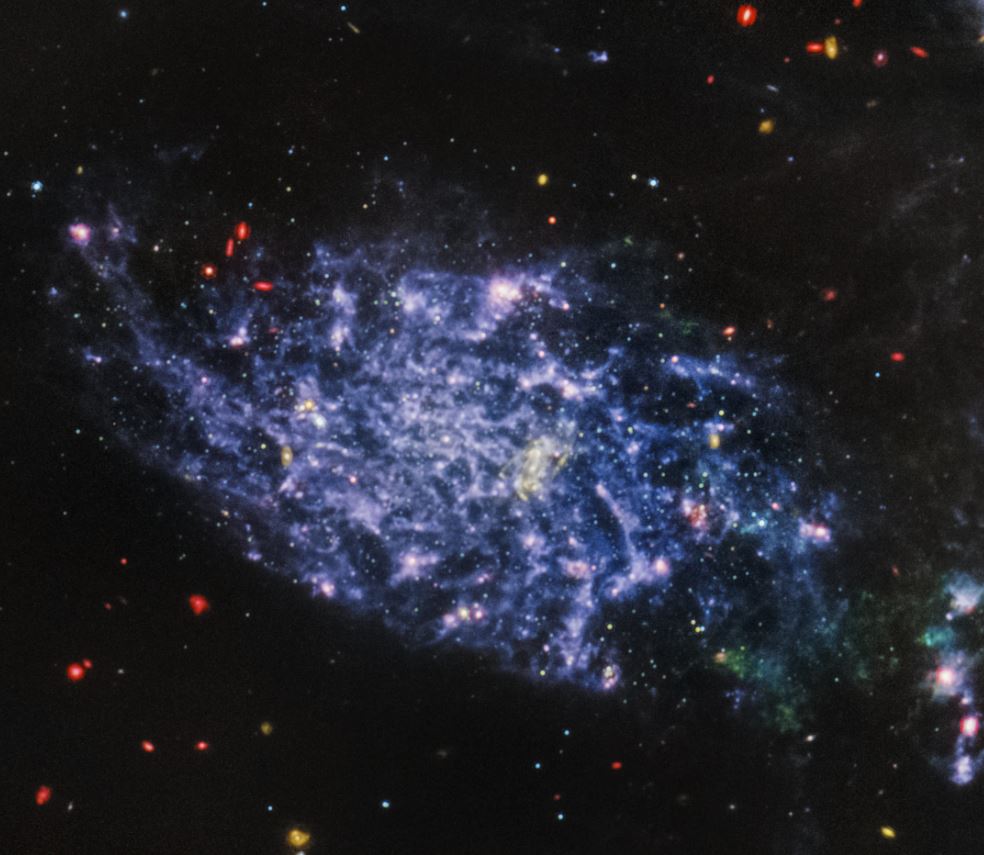
These sets of interacting galaxies are very rare today as the universe is stretched out and expanding at a rate much faster than the speed of light. But in the earlier universe, when the galaxies were nearby and it was much denser, if one could see how spacetime looked, this image exactly shows the way it could have.
3. SMACS 0723 Deep Field
This deep field image is about 4.6 billion light-years from Earth, mostly around the time of the formation of our solar system.
The galaxy cluster at the center of the image is too gigantic and thereby, due to its enormous mass, it distorts space. In this phenomenon of “Gravitational Lensing”, a massive object bends light coming from the background like a magnifying glass, and the more distant galaxies get visible.
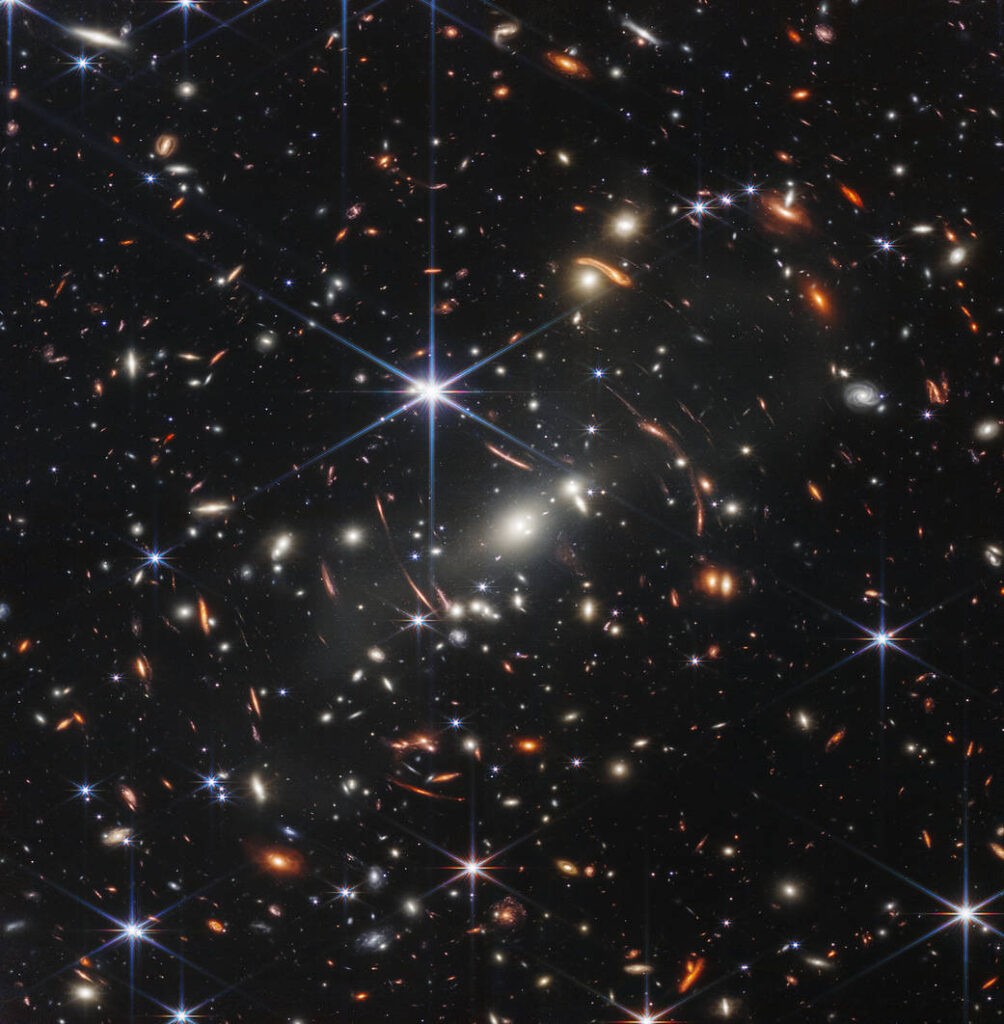
The above phenomenon is demonstrated by the prominent arcs in this deep field image. The gravitationally lensed galaxies could be anywhere between 11 to 13 billion light years old.
This means we are seeing some of the galaxies that were, in fact, the very first galaxies of our universe.
The redder a galaxy appears in the deep field image, the older it is. It is because as the universe stretches out, the galaxies also separate from each other, thereby causing the light coming from them to be stretched out, eventually falling into the infrared region of the electromagnetic spectrum.
To determine whether the galaxies in the left arcs are the same or not, James Webb used its Near-Infrared Imager and Slitless Spectrograph (NIRISS) to study the spectra of those two galaxies.
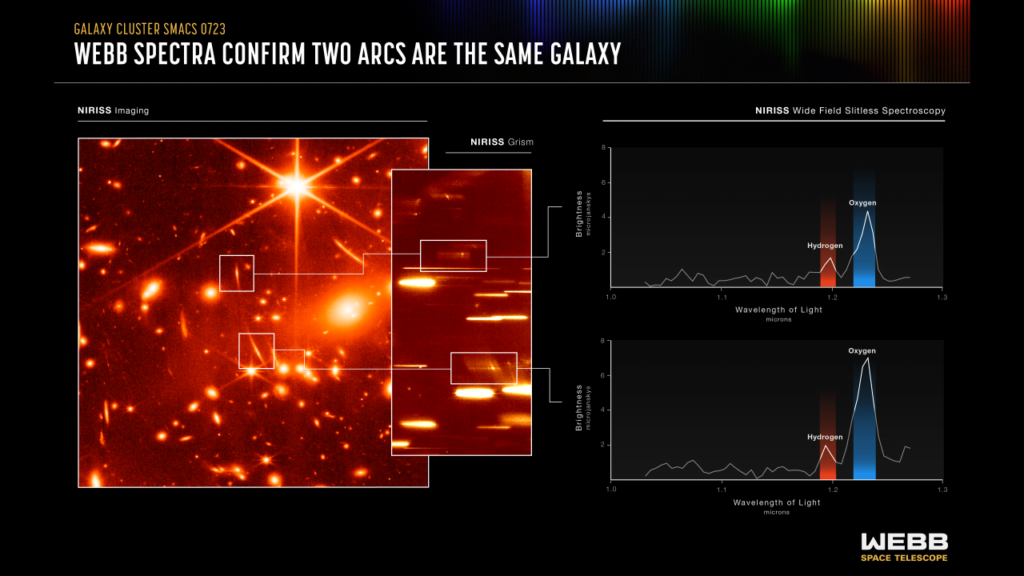
Plotting them into a graph as shown above revealed the distribution of ionized oxygen and atomic hydrogen lines along the arc and they both matched, indicating that the arcs are the mirror images of the same galaxy.
By using an extremely sensitive instrument called microshutter array, the telescope could observe the light emanating from the galaxies that existed in the very early universe.
The below image shows one of those galaxies whose light was captured by the Webb and by stretching out the light into a spectrum as shown in the graph, many intrinsic details such as the chemical composition, temperature, and density of the galaxy’s ionized gas can be studied.
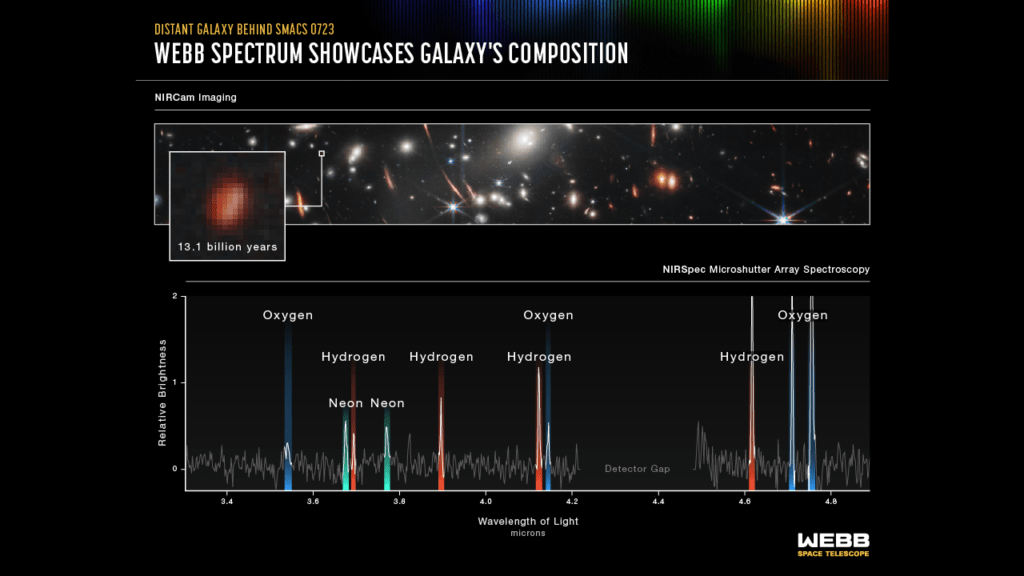
The deep field image was also taken by the predecessor of James Webb Space Telescope, the Hubble Space Telescope. While the Hubble took 10 days, James Webb took only 12.5 hours to capture this breathtaking view of our early universe.
4. WASP-96B Spectroscopy
James Webb Space Telescope can also detect the atmosphere of exoplanets, the planets that lie in another star system.
The below image is a spectrum of an exoplanet, WASP-96B, that orbits around a star similar to our Sun, but is around 1150 light years away.
As shown in the graph, James Webb captured data belonging to the chemical signature, the spectra of the exoplanet’s atmosphere.
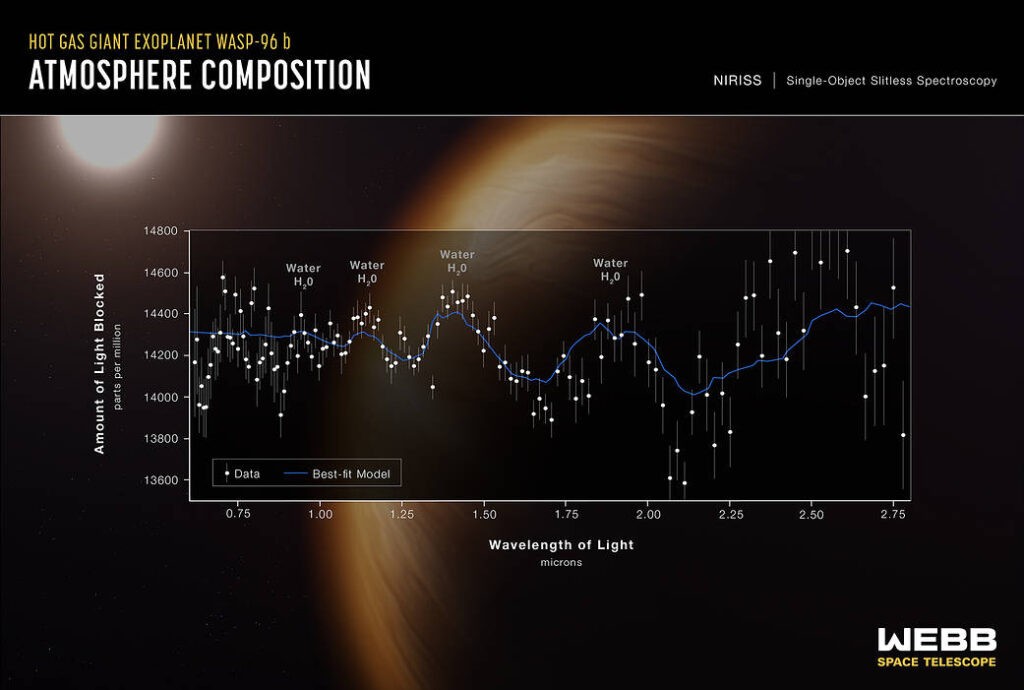
In the search for extra-terrestrial life, the different lines of absorption show various chemicals that absorb the light coming from that planet’s atmosphere. In the graph, you can see the presence of water in this planet’s atmosphere, and the non-uniform rise and fall of the curve also tells about the presence of clouds and haze in its atmosphere.
WASP-96B is a Jupiter-sized planet but orbits very closer to its star and completes one revolution in around 3.5 Earth-days. James Webb captured the whole transit of about 6.5 hours in front of its star and gathered the relevant data.
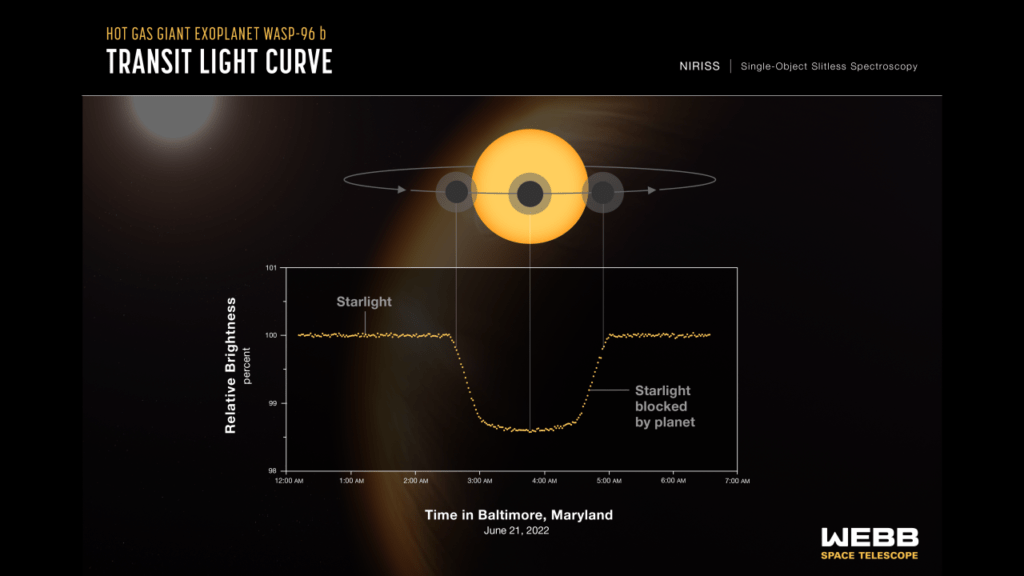
It is important to note here that the James Webb telescope has not captured a direct image of the exoplanet and its atmosphere. The background illustration of the planet and the star is based on the NIRISS (Near-Infrared Imager and Slitless Spectrograph) data and from the previous ground and space-based observations.
5. Carina Nebula
Located about 7500 light years from Earth, Carina Nebula is one of the most active star-forming regions in our galaxy.
It is a giant cloud of gas and dust that is actively gathering materials to form new stars. This NIRCam image is a whooping 16 light-years wide and consists of various cosmic “cliffs”.
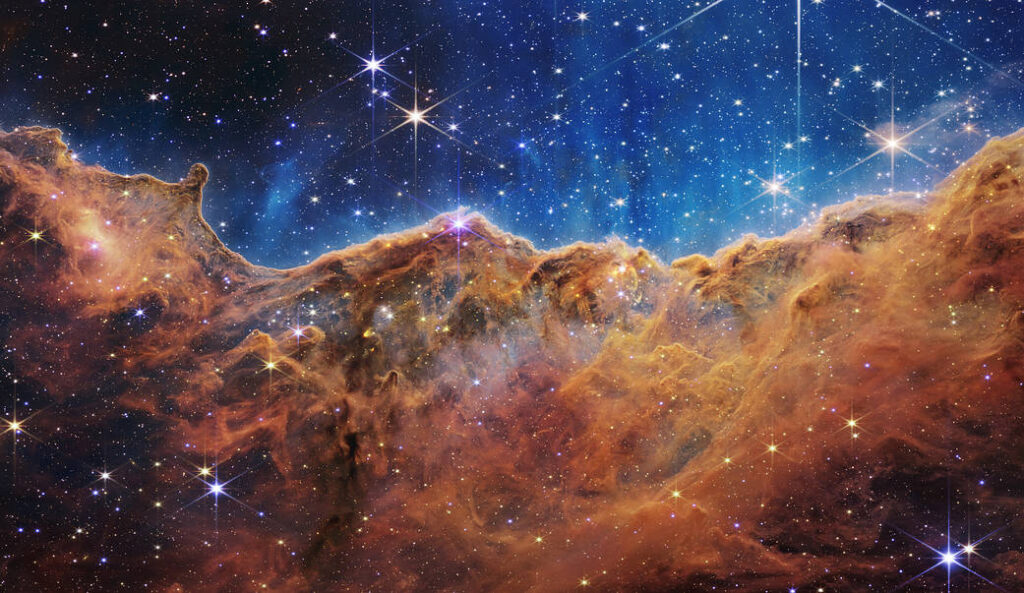
The haze that seems to be rising from the cliffs is the hot, ionized gas and hot dust from the ultraviolet radiation emitted from the immensely hot, massive, and young stars located in the center.
The golden color is attributed to the proto-stellar jets and outflows from the dust enveloped infant stars. The extremely high radiation from the stars is carving the nebula’s mountains by abrading the landscape slowly.
In the below composite image by NIRCam and MIRI, previously invisible areas of star birth become prominently visible. The young stars and their planet-forming disks shine brightly in the mid-infrared, giving it the hues of pink and red.
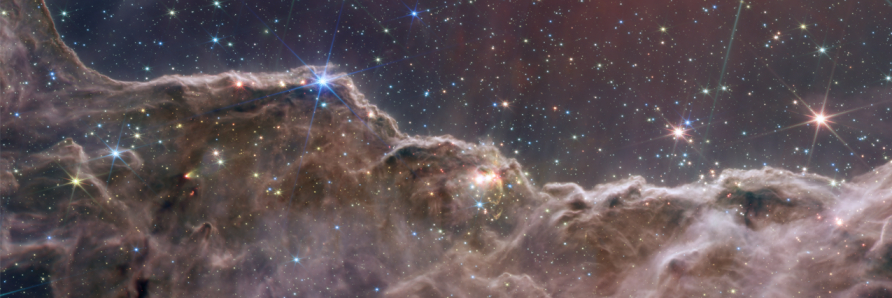
Hubble also took an image of Carina Nebula. But due to the dust and gas that blocks shorter visible light, it could not get such a detailed image.
The image, on further analysis, can explain how stars form and when in their life cycle they start becoming visible, i.e., start appearing in the visible portion of the electromagnetic spectrum.
This image also shows the initial stage when the space was filled with pristine hydrogen atoms and how gradually, they got converted into carbon, nitrogen, oxygen, and other heavy metals.
What Lies Ahead
The James Webb Space Telescope has given a glimpse of what we can achieve together as a species.
In the days to come, we will witness more such images and data that will continue to widen our understanding of the cosmos. It is indeed only a beginning as Carl Sagan famously said,
“Somewhere, something incredible is waiting to be known.”

